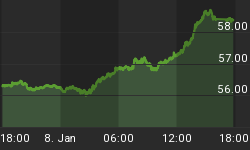From Bruce Zaro:
Since the peak in the Dow Jones on May 10th at 11650, the seasonably unfavorable market period arrived right on queue. Sectors that had led the market up from November's bottom including steel, precious and base metals have come down 24%, 20 and 18% since, respectively. Also, in predictable fashion, these former leaders have been replaced by the classic defensive issues like Utilities, Healthcare and Drugs up 1%, down .49% and down 1.34%, respectively.
Short-term Point and Figure indicators are now very oversold and at levels suggesting a snap back may be close. Many asset classes like Emerging Markets are 200% oversold, the mirror image of their position at 200% overbought just 30 days ago! In addition, many sectors are approaching optimal entry points where much of the risk has been wrung out.
Aggressive traders can be looking to trade the most oversold sectors on the first signs demand's re-emergence. Longer-term investors should be more wary and may want to use any stock market bounce to lighten up on holdings in preparation for what I expect will be a more lasting mid-term election cycle low later in the year. That could prove to be a very worthwhile entry point.
From Michael Pento:
With the simultaneous removal of global liquidity by the world's central bankers, investors are justly concerned that the result will be a global recession. I feel there is an elevated risk that scenario could be realized -- call it the second half of the recession that was postponed a few years ago by Alan Greenspan's aggressive loosening of monetary policy. However, it is still possible the data-dependent Ben Bernake may look at recent data and pause at the June meeting, a possibility markets are ignoring at present; indeed, a central banker would likely to conclude that housing and commodity markets are now screaming for the money supply to increase more quickly (I strongly disagree, of course). If he does halt the Fed's tightening campaign, the expected result would be a violent rally in the U.S. markets and resumption of the U.S. Dollar's decline.
There is a chance that the fed will continue to fight the inflation that it created and continue tightening, but I believe it is quickly becoming more likely the Fed will acquiesce and pause in June, bringing about a short-term reversal in most of the trends we've seen over the last two weeks. It will be interesting to see if we get signals to this effect from Bernanke in the days to come.
From Chip Hanlon:
Sentiment rushing to panic stages: put/call ratio has been above one in 6 of June's first 8 trading session (7 out of 10 since Memorial Day), an uncommon string... AAII sentiment survey trading at bearish extremes (which is a bullish contrary signal for stocks) not seen since low of May, 2005 (and February 2003 before that).
U.S Dollar not trading very well considering trends in its favor (rate hike expectations, precious metals correction, flight to safety from foreign markets)... I still hold the unique view that the Greenback may be building a huge, multi-year head-and-shoulders bottom (and the Euro a corresponding top) but the jury's still out on that one...
I concur with Bruce above that the market is getting washed out. While it felt a few days ago like a market that could easily see a down-500 day, the longer this bleed goes on, the less likely that becomes.
I also agree with Michael above that the market may now be a bit too certain of a Fed hike at June's meeting; if one believes Bernanke is a dove -- the appropriate viewpoint until he proves otherwise -- then it's reasonable to suspect he'll soon back slightly away from last week's "hawkish" remarks, leaving the Fed room to pause when it meets in two weeks. Should such a pause occur, it would likely bring about a reversal in most of the trends we've seen over that last two weeks, leading to rising stocks, commodities and foreign currencies along w/a pullback in the U.S. Dollar.
















